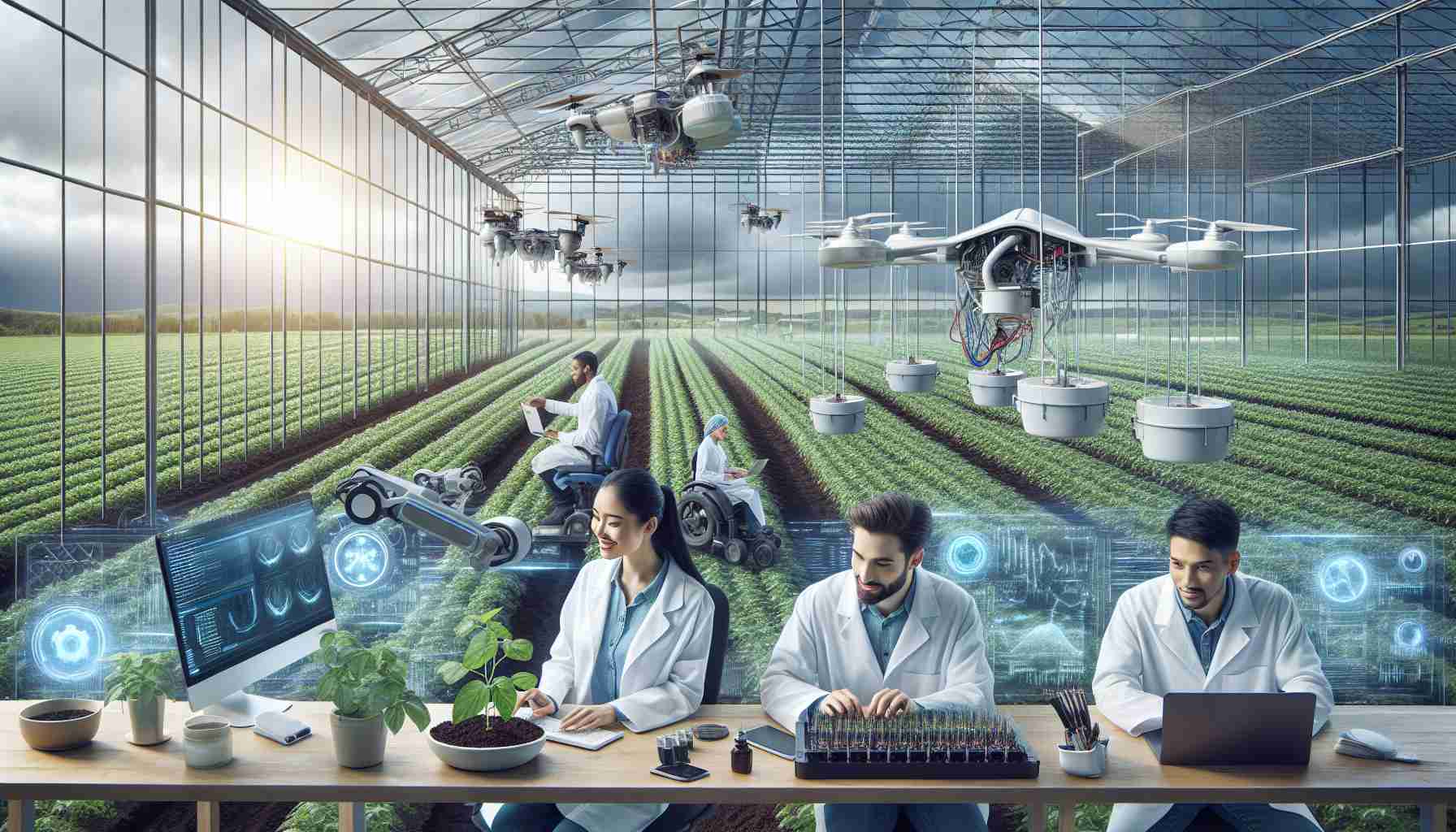Integrating cutting-edge technologies like blockchain and artificial intelligence (AI) into the realm of agriculture has the potential to revolutionize the industry. By leveraging these tools, farmers can enhance operational efficiency, promote sustainability, and bolster transparency throughout the food supply chain. Let’s explore the innovative applications of these technologies in the agricultural landscape and delve into the critical role of education and awareness in driving adoption.
**IoT and Advanced Analytics: Unleashing the Potential**
The seamless integration of blockchain and AI hinges on the foundation laid by the Internet of Things (IoT). IoT facilitates the interconnection of devices, allowing for data collection and exchange on a massive scale. AI steps in to analyze this data and generate valuable insights for decision-making. Meanwhile, blockchain provides a secure and decentralized ledger for recording transactions. When combined, these technologies empower the agriculture sector with novel solutions and unprecedented efficiency.
**Achieving Precision through Data-Driven Decisions**
The convergence of blockchain and AI paves the way for predictive agriculture, a data-centric approach that harnesses advanced analytics, machine learning, and AI algorithms. By aggregating data from diverse sources such as IoT sensors, weather predictions, and historical crop information, farmers can make informed decisions to optimize productivity and sustainability. Predictive agriculture enables precise yield forecasts, resource management, early detection of diseases and pests, risk mitigation, and streamlining of the supply chain.
**Unlocking the Potential of IoT, Blockchain, and AI**
The Internet of Things has ushered in a new era, connecting an array of devices to the internet and revolutionizing various industries. As agriculture emerges as a critical pillar of civilization, the demand for efficient and sustainable farming practices becomes more pressing, particularly in light of the projected global population surge to 9.7 billion by 2050. IoT sensors serve as the frontline data collectors, capturing crucial farming metrics like soil moisture, temperature, and crop health. AI algorithms analyze this data to offer actionable insights, empowering farmers to make swift decisions on irrigation, fertilization, and pest management. Blockchain technology adds an additional layer of transparency and trust by securely recording and verifying transactions.
**FAQ**
1. How do blockchain and AI complement each other?
– Blockchain provides a secure ledger, while AI analyzes data to enable innovative solutions for agriculture.
2. What is predictive agriculture?
– Predictive agriculture utilizes data analytics and AI algorithms to improve farm productivity and sustainability.
3. What advantages does IoT offer in agriculture?
– IoT sensors collect vital farm data, aiding farmers in making informed decisions on irrigation, fertilization, and pest control.
4. How does blockchain reshape the food supply chain?
– Blockchain enhances traceability, security, and collaboration in the supply chain, automating processes and ensuring transparency.
5. What challenges hinder the adoption of blockchain and AI in agriculture?
– Educating farmers and ensuring accessibility to these technologies remain primary obstacles. Awareness campaigns, subsidies, and educational programs can help overcome these challenges.
**Sources**
– [The Indian Panorama](https://www.theindianpanorama.news/)
– [FarmSmart](https://www.farmsmartconference.com/)
**Industry Landscape**
The agriculture industry stands as a pivotal sector responsible for catering to the sustenance needs of a burgeoning global populace. However, it grapples with myriad challenges such as climate variations, water scarcities, resource constraints, and the imperative shift towards sustainable farming methods. In response, stakeholders in the industry are exploring innovative technological avenues to combat these challenges and drive operational efficiency.
The incorporation of blockchain and AI into agriculture holds the promise of reshaping the industry landscape. Blockchain technology ensures meticulous traceability, heightened security, collaborative improvements, and sustainable transparency within the food supply chain. Conversely, AI technologies enhance crop yields and optimize resource consumption through predictive analytics and data-guided decision-making.
**Market Projections**
Anticipated market forecasts underscore the exponential growth potential of blockchain and AI applications in agriculture. Reports from MarketsandMarkets indicate that the global agriculture analytics market, encompassing AI technologies, is poised to hit $1.4 billion by 2025, with a robust compound annual growth rate of 14.3% projected over the forecast duration.
Similarly, the blockchain sector within agriculture is earmarked for significant expansion. Grand View Research projects the global blockchain in agriculture market to soar to $1.4 billion by 2028, boasting a notable compound annual growth rate of 52.9% from 2021 to 2028.
These projections underscore the mounting recognition of the transformative impact these technologies can wield in the agricultural domain, fueling burgeoning market demand for their adoption.
**Challenges and Imperatives**
While blockchain and AI present promising prospects for revolutionizing agriculture, various challenges associated with their implementation and uptake linger.
Foremost among these hurdles is the deficiency in awareness and education regarding these technologies amongst farmers. Many agricultural practitioners may lack the requisite knowledge or access to resources vital for embracing these innovations. Bridging this awareness gap, offering educational initiatives, and providing incentives are pivotal steps in propelling the widespread adoption of blockchain and AI in agriculture for a sustainable and efficient future.
The source of the article is from the blog trebujena.net
